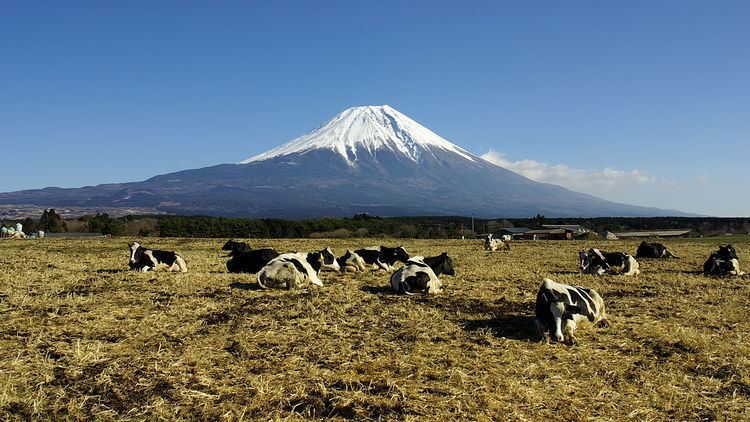 | ||
100 Famous Japanese Mountains (日本百名山, Nihon Hyaku-meizan) is a book composed in 1964 by mountaineer and author Kyūya Fukada. The list became famous when Crown Prince Naruhito took note of it. The list has been the topic of NHK documentaries, and other hiking books.
Contents
The complete list (sorted into regions from northeast to southwest) is below.
History
The selection of celebrated mountains had been done since the Edo period. Tani Bunchō praised 90 mountains as celebrated mountains in 日本名山図会 (A collection of maps and pictures of famous Japanese mountains), but among these were included such small mountains as Mount Asama in Ise, Mie and Mount Nokogiri on the Boso Peninsula. Unsatisfied with this selection, Fukuda, who had climbed many mountains in Japan, selected 100 celebrated Japanese mountains based on a combination of grace, history, and individuality, moreover excluding mountains with an altitude of less than 1,500 m (4,921 ft).
Though it was at first unknown other than to some hiking-lovers and avid readers, reports that the list was one of the Prince's favorite books increased its profile. The Crown Prince is a mountain enthusiast to the extent that he has even belonged to an alpine club, and it has been reported that it is a dream of his to reach the summit of every mountain on the list.
Since the 1980s, there has been a climbing boom amongst the middle-aged. It is not rock climbing that has been popularised, but rather hiking or trekking. However, due to the creation of more mountain lodges and trails, and the improvement of mountaineering technology, it became possible to climb mountains which had previously been considered very rugged.
The list became widely read, and people who choose mountains from the book to climb have increased. In imitation of Prince Naruhito, many people have also set the goal of reaching every summit on the list.
Mountaineering programs on NHK helped popularize the list. The station televised a documentary about taking up the mountains on the list one by one, and Rambō Minami's mountaineering primer for the middle-aged. These gained wide popularity, and the list became widely known. Since then, lists of 200 and 300 mountains, lists of hundreds of mountains in various localities, and a list of 100 floral mountains have appeared.
In 2002, a new record traversing all of the mountains in 66 days was established. This was superseded in 2007, with a new record of 48 continuous days.
English translation by Martin Hood is published as One Hundred Mountains of Japan (University of Hawaii Press 2014).
Assessment
Compared to other modern essays on Japanese mountains such as Mountaineering and Exploration in the Japanese Alps by Walter Weston, the book is short. Fukuda writes about the history of the mountains, especially the origins of their names. It is not a text that people can read to vicariously experience climbing or nature. Some think that the reason the list has been widely well received is that it put into focus 100 mountains which were already well known.
Selection criteria
Fukada selected 100 mountains from those which are 1,500 meter or higher and he had climbed up ever, according three criteria: grace, history and individuality. He softened the altitude limit on some exceptions, like Mount Tsukuba and Mount Kaimon.
There have been many varying opinions about the criteria for selection. It is often pointed out that the list emphasises mountains in the Chūbu region. It has been reported that Fukada, who was from Ishikawa Prefecture, was brought up looking at Mt. Haku, but he only selected 13 further west.
However, grace and individuality are in the eye of the beholder, and throughout history, many legends have been circulated about mountains throughout the Kinki region. Moreover, many mountain-lovers have argued that since Mount Tsukuba, with an altitude of 877 meters (876 at the time), was selected, certain mountains in other localities should have been selected.
